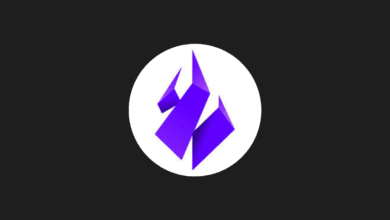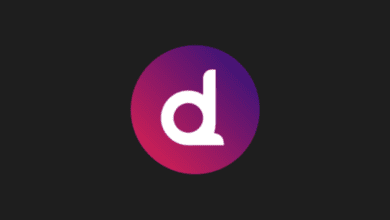Polkadot (DOT) Price, Charts, Market Capitalization
Polkadot (DOT) Graphics
Polkadot (DOT) is a cutting-edge, open-source blockchain protocol that enables interoperability between different blockchains. Conceived by Dr. Gavin Wood, a co-founder of Ethereum, Polkadot’s core mission is to create a truly decentralized and interconnected web (Web3) where various blockchains can communicate, share data, and pool their security. It aims to solve the problem of blockchain fragmentation and scalability, paving the way for a multi-chain future where specialized blockchains can seamlessly interact and work together.
Polkadot is often described as a “blockchain of blockchains” or a “Layer 0” meta-protocol, as it provides the foundation for other blockchains to be built upon and connect.
📊 Polkadot (DOT) Quick Facts
| Feature | Details |
| Token Name | Polkadot (DOT) |
| Blockchain | Polkadot Network (Native) |
| Category | Interoperability, Scalability, Web3, Staking, Governance, Decentralized Applications (dApps) |
| Circulating Supply | Approximately 1.45 Billion DOT (as of mid-July 2025 – this is dynamic and should be verified from current, reliable sources like CoinMarketCap or CoinGecko) |
| Total Supply | Approximately 1.45 Billion DOT (Note: Polkadot has an inflationary model; supply changes over time.) |
| Max Supply | No fixed maximum supply (inflationary model to incentivize staking) |
| Use Cases | Staking, parachain auctions (bonding), governance, transaction fees. |
| Official Website | polkadot.network (Always verify the official website from trusted crypto data aggregators to avoid unofficial or scam sites.) |
🔍 What is Polkadot?
Polkadot addresses critical challenges in the blockchain space:
- Interoperability: Most blockchains today operate in isolation, unable to communicate with each other. Polkadot enables different blockchains (called parachains) to exchange information and transactions seamlessly.
- Scalability: Monolithic blockchains often face bottlenecks when transaction volume increases. Polkadot’s sharded architecture allows for parallel processing of transactions across multiple parachains, significantly enhancing scalability.
- Customizability: Polkadot allows developers to create application-specific blockchains (parachains) with custom functionalities, rather than being restricted to a single blockchain’s design.
- Shared Security: All parachains connected to Polkadot’s central Relay Chain benefit from its pooled security, meaning even small parachains are as secure as the entire network.
- Upgradability: Polkadot’s on-chain governance system allows for forkless upgrades, making it easier to evolve and adapt without disrupting the network.
At its core, Polkadot is composed of:
- Relay Chain: The central chain of Polkadot, responsible for the network’s shared security, consensus, and interoperability across parachains.
- Parachains: Independent, application-specific blockchains that connect to the Relay Chain and benefit from its security and interoperability. They can have their own tokens and custom logic.
- Parathreads (Future/Optional): Similar to parachains but with a pay-as-you-go model for connecting to the Relay Chain, offering more flexibility for projects that don’t need continuous connectivity.
- Bridges: Special parachains that connect Polkadot to external blockchains like Ethereum or Bitcoin, enabling cross-network communication.
✨ Key Features and Ecosystem Components
Polkadot, powered by the DOT token, offers several key features:
- Substrate Framework: A modular framework that allows developers to easily build custom blockchains (parachains) that are inherently compatible with Polkadot. This significantly reduces development time.
- Parachain Auctions/Crowdloans: Projects compete to secure a slot on the Relay Chain by bidding DOT tokens. Users can contribute their DOT to these bids (called crowdloans) to support projects they believe in, earning rewards from the project if it wins a slot. This mechanism locks up a significant amount of DOT, reducing circulating supply.
- Shared Security: Parachains don’t need to establish their own security models from scratch. Instead, they derive security from the Relay Chain, which is protected by a large network of validators.
- On-Chain Governance: DOT holders can propose and vote on network upgrades, changes to parameters, and even treasury spending. This allows for forkless upgrades and decentralized decision-making.
- NPoS (Nominated Proof-of-Stake) Consensus: Polkadot uses a sophisticated Proof-of-Stake mechanism where DOT holders can “nominate” validators to secure the network. Both nominators and validators earn rewards for their participation.
📈 DOT Tokenomics
The DOT token is the native utility and governance token of the Polkadot network, fulfilling several critical roles:
- Staking: DOT holders can stake their tokens to support the security of the Relay Chain. Validators and nominators (those who delegate their DOT to validators) earn rewards from network inflation. This reduces the circulating supply.
- Parachain Auctions (Bonding): Projects bond DOT to secure a parachain slot on the Relay Chain. These DOT are locked for the duration of the slot lease (e.g., up to 96 weeks). Users can participate in crowdloans by contributing their DOT to a project’s bid, further locking up DOT.
- Governance: DOT holders have voting rights in Polkadot’s on-chain governance system, enabling them to participate in decisions regarding network upgrades, treasury allocation, and more.
- Transaction Fees: While parachains can have their own fee mechanisms, DOT may be used for certain core network transactions on the Relay Chain.
- Inflationary Model: Unlike many cryptocurrencies with a fixed supply, DOT has an inflationary model. New DOT are continually minted to reward validators and nominators for securing the network. This inflation rate is dynamic and adjusted based on the proportion of DOT being staked.
🚀 Use Cases & Applications
- Web3 Infrastructure: Provides the foundational layer for a truly interoperable and scalable decentralized internet.
- Specialized Blockchains: Enables the creation of purpose-built blockchains (parachains) optimized for specific use cases (e.g., DeFi, gaming, NFTs, supply chain, identity).
- Cross-Chain DeFi: Facilitates seamless asset transfers and communication between different DeFi protocols on various parachains.
- Decentralized Identity: Supports the development of self-sovereign identity solutions across multiple blockchains.
- Gaming & Metaverse: Powers complex decentralized games and metaverse environments by allowing parallel processing and inter-game asset transfers.
- Enterprise Solutions: Offers a secure and customizable platform for enterprises to build private or consortium blockchains that can still interact with the public Polkadot network.
✅ Pros and ❌ Cons
Pros
- True Interoperability: Aims to solve the “walled garden” problem of blockchains, enabling seamless communication.
- Scalability: Its sharded architecture allows for high transaction throughput through parallel processing.
- Shared Security Model: Provides robust security for all connected parachains, even small ones.
- Customizability: The Substrate framework allows for highly specialized and optimized parachains.
- On-Chain Governance & Forkless Upgrades: Enables democratic evolution of the network without disruptive hard forks.
- Strong Team & Ecosystem: Developed by Web3 Foundation with a highly experienced team and a growing ecosystem of projects.
Cons
- Complexity: The multi-chain architecture (Relay Chain, parachains, parathreads, bridges) can be complex for new users to understand.
- Parachain Slot Competition: Securing a parachain slot requires significant DOT bonding, which can be a barrier for new projects.
- Inflationary Model: While designed to incentivize staking, the uncapped supply and inflation might be a concern for some investors compared to fixed-supply cryptocurrencies.
- Dependence on Ecosystem Growth: Polkadot’s value proposition largely depends on the successful development and adoption of its parachain ecosystem.
- Competition: Faces competition from other interoperability solutions (e.g., Cosmos, Avalanche) and Layer 2 scaling solutions.
🛒 How to Buy & Store DOT
- Select an Exchange: Polkadot (DOT) is a highly liquid and widely available cryptocurrency. You can purchase it on most major centralized exchanges (CEXs) such as Binance, Coinbase, Kraken, KuCoin, Bybit, OKX, and many others. It’s also available on some decentralized exchanges (DEXs) on compatible networks.
- Set Up an Account: Register and complete the KYC (Know Your Customer) verification process on your chosen centralized exchange.
- Deposit Funds: Deposit fiat currency (USD, EUR, etc.) via bank transfer, credit/debit card, or other supported payment methods, or deposit other cryptocurrencies (like USDT, BTC, ETH) into your exchange account.
- Purchase DOT: Navigate to the trading pair for DOT (e.g., DOT/USDT, DOT/BTC) and place a buy order.
- Secure Storage: For long-term security, it’s highly recommended to withdraw your DOT tokens from the exchange and store them in a secure non-custodial wallet.
- Official Polkadot.js Extension/Wallet: A feature-rich wallet specifically designed for Polkadot and its ecosystem.
- Hardware Wallets: Ledger and Trezor offer the highest level of security for storing DOT.
- Other Wallets: Wallets like Nova Wallet, Talisman, or Fearless Wallet also support DOT.
🔮 Future Roadmap
Polkadot’s roadmap is continuously evolving, guided by its on-chain governance. Key areas of future development include:
- Parachain Rollout & Optimization: Continued onboarding of new parachains and optimizing their performance and interactions.
- Coretime (or Agile Coretime): A shift from fixed parachain slots to a more flexible model where projects can purchase “coretime” (compute time on the Relay Chain) on demand or through long-term arrangements. This aims to increase efficiency and accessibility for all projects.
- XCM (Cross-Consensus Message Format) Enhancements: Further developing and optimizing XCM for more seamless, secure, and complex cross-chain communication between parachains and external networks.
- Interoperability with Other Chains: Strengthening bridges to major external blockchains like Bitcoin and expanding connections to other ecosystems.
- Developer Tooling & Ecosystem Growth: Continuously improving the Substrate framework and providing more resources to foster a vibrant developer ecosystem.
- Decentralized Applications (dApps): Growth and innovation of dApps being built on Polkadot parachains, demonstrating the network’s capabilities.
🏁 Conclusion
Polkadot (DOT) is a foundational project designed to usher in a new era of blockchain interoperability and scalability. By enabling disparate blockchains to communicate, share security, and process transactions in parallel, it addresses critical limitations of current blockchain technology. The DOT token is integral to this vision, powering its security, governance, and the innovative parachain auction mechanism. With its robust architecture, strong development team, and a commitment to a decentralized multi-chain future, Polkadot continues to be a key player in shaping the next generation of the internet.
About Polkadot (DOT)
| Contract | |
| Website | polkadot.com |
| Explorers | Etherscan |
| Community | |
| API idd | polkadot |
Polkadot (DOT) USDC (1 DOT) To USD//Coin) Exchange Calculator
Follow us on TWITTER (X) and be instantly informed about the latest developments…











